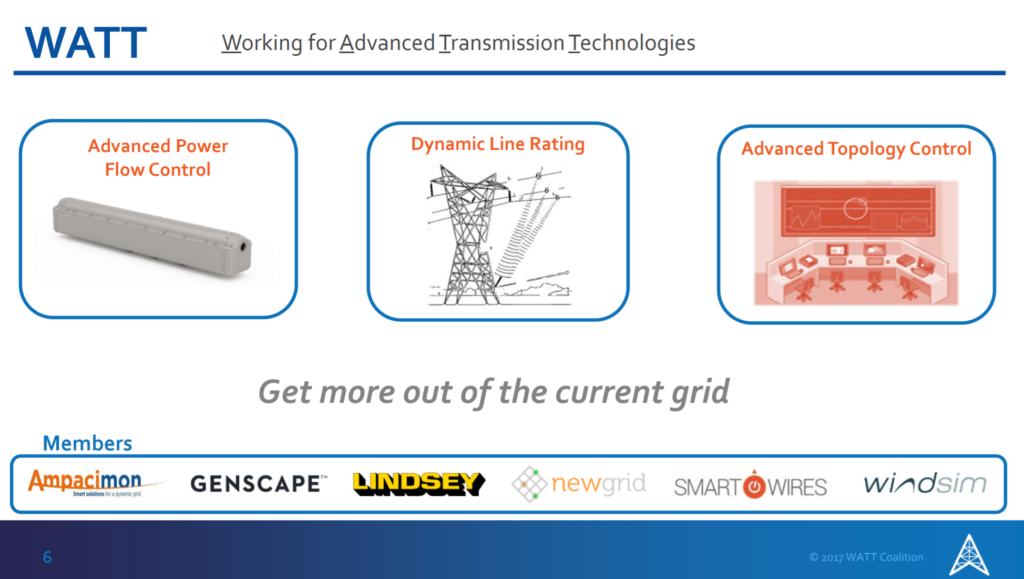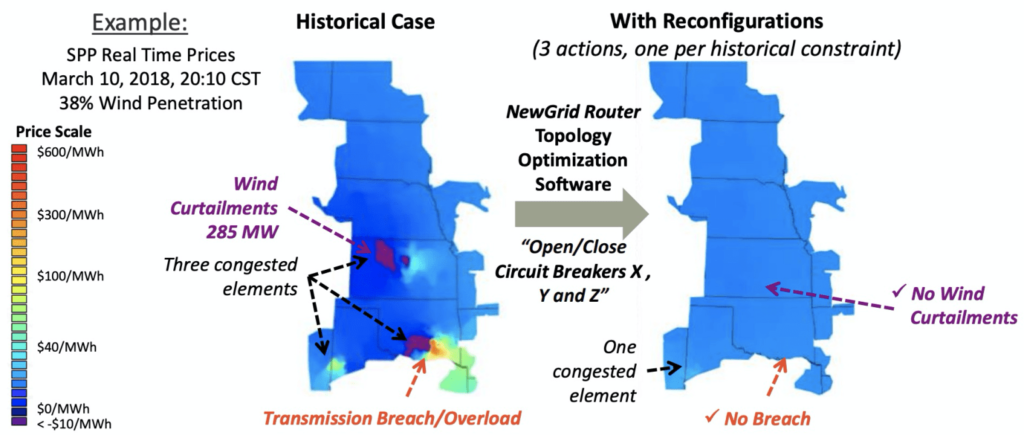via SaveTheClimate
U.S. utilities could use three technologies to increase the utilization of transmission lines, enabling 500 GW of renewables projects to win interconnection approval, say industry experts Jigar Shah and Rob Gramlich, in an op-ed published by Utility Dive.
These three transmission technologies – advanced power flow control, dynamic line ratings, and advanced topology – have been implemented in “a matter of weeks and months” to increase transmission utilization in many parts of the world, say the authors. The technologies are shown in this WATT Coalition presentation on the topic:
Without these technologies, 500 GW of solar and wind projects “are currently stuck in transmission queues, forcing developers to wait as long as 900 days to get interconnected to the grid,” said the experts.
The Federal Energy Regulatory Commission (FERC) should create investment incentives for utilities to implement the advanced transmission technologies, wrote Shah, who is president of Generate Capital, and Gramlich, who is president of Grid Strategies and the point of contact for the WATT Coalition.
Without such incentives, utilities will favor new transmission lines, on which they can earn a guaranteed rate of return on the massive investments required. “Rather than encouraging electric utilities to spend more,” said Shah and Gramlich, “the incentive for grid-enhancing technologies must instead reward utilities for more efficiently using what we have already paid for.”
Thirteen U.S. Senators wrote to FERC last month, asking the commission to create performance-based incentives for utilities to improve transmission capacity and efficiency. They noted that the Energy Policy Act of 2005 directed FERC to “implement transmission rates that improve reliability and reduce the cost of power.” The Senators favor storage as transmission, in addition to the three technologies promoted by the WATT Coalition.
Grid operator Southwest Power Pool (SPP) has validated one of the three technologies, advanced topology, through a back-testing simulation of 20 actual instances of “congestion/overloads.” A joint presentation by SPP, The Brattle Group and Newgrid described advanced topology as “Waze for the transmission grid”–moving power along less-congested lines–with sample results shown in this diagram:
SPP found that if it had used advanced topology in the 20 cases studied, power flow would have been reduced on the constrained transmission line by an average of 26%, and by at least 10% in each case.
The U.S. Department of Energy described the technology of dynamic line ratings for transmission lines, by comparing it to the widely used static line ratings:
- The maximum power flow capacity on a transmission line is limited by heating considerations, to maintain safe and reliable operating conditions. These static line ratings (SLRs) are usually calculated using conservative assumptions about the transmission-line operating environment, producing an inflexible constraint that does not take advantage of changing or favorable environmental conditions (e.g., wind cooling) that allow for greater transmission usage. DLR is a blanket term for the many different technologies and methodologies for determining conductor thermal ratings in a more-dynamic fashion using improved, more granular, or real-time data. At its core, DLR systems help system operators determine the prevailing current carrying capacity limits of transmission lines to relax constraints based on SLRs.
To describe the technology of advanced power flow control, the WATT Coalition draws a comparison with ordinary power flow control:
- Power flow control is a set of technologies that push or pull power away from overloaded lines and onto underutilized corridors within the existing transmission network. Advanced power flow control provides this same function with advanced features such as the ability to be quickly deployed, easily scaled to meet the size of the need, or redeployed to new parts of the grid when no longer needed in the current location.
Members of the WATT Coalition include Ampacimon, LineVision, Inc, Lindsey Manufacturing, NewGrid, SmartWires, and WindSim Americas Inc. The coalition’s acronym stands for “working for advanced transmission technology.”

